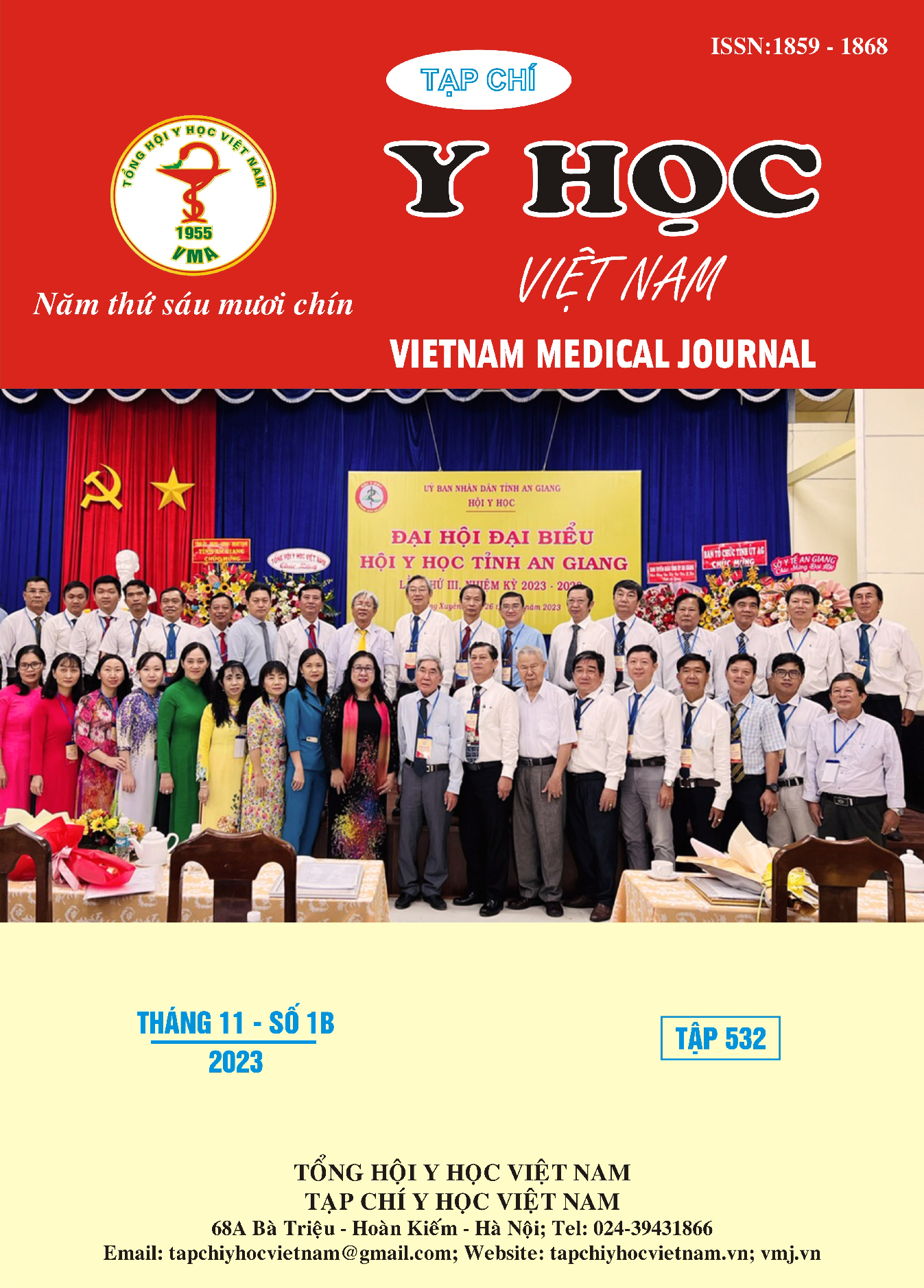TREATMENT RESULTS OF PATIENTS WITH VENTRICULAR ARRHYTHMIAS ACCOMPANIED BY CORONARY ARTERY DISEASE AT NGHE AN GENERAL FRIENDSHIP HOSPITAL
Main Article Content
Abstract
Objective: Evaluate the treatment results of patients with ventricular arrhythmias with coronary artery disease at Nghe An General Friendship Hospital. Subjects and methods: 31 patients were diagnosed ventricular arrhythmias, classified ≥ Lown 2 at Nghe An General Friendship Hospital. Patients were perform coronary angiography through the catheter and evaluated the results using QCA method. The patients have coronary artery stenosis ≥ 70% (significant stenosis). The patients were treated for ventricular arrhythmias: medication, treatment with radiofrequency energy (RF) and a combination of the above two methods. We followed and evaluated the early results of treatment for ventricular arrhythmia at the time the patient was discharged from the hospital. Results: General treatment methods of the research group: Medical therapy was 19.4%, RF ablation was 9.6%, coronary artery intervention with medical treatment accounts 71%. The overall treatment results of the research group showed that the rate of effective treatment of ventricular arrhythmias was 80.6%, of which 56.1% of patients had completely successful treatment of premature ventricular contractions (PVC), and 06 patients had treated ineffective results, accounting for 19.4%. In patient group still had PVC after treating, accounting for 48.4%, including 29% of patients with ventricular arrhythmias had reduced, the quantity of patients with PVC was unchanged accounting for 19.4%. In the group of significant coronary artery stenosis, the rate of patients with coronary artery stents placement was 71% and 10 patients did not receive coronary artery intervention, accounting for 32.3%. In the group that received intervention with coronary stent placement, the rate of effective treatment of ventricular arrhythmias accounted for 76.2%, of which the rate of successful treatment was 57.1%. Conclusion: The rate of effective treatment of ventricular arrhythmias in the study group accounted for 80.6%, of which the rate of patients without ventricular premature contraction after treating accounted for 51.6%; The patients with ventricular arrhythmias had unchanged results after treating accounted 19.4%. The patients was intervented coronary artery through catheter accouting for 71%, of which the effective treatment rate was 76.2%.
Article Details
Keywords
Coronary artery disease, treament results for ventricular arrhythmias, ventricular premature contractions, coronary artery lesion, significant coronary artery stenosis.
References
2. Zeppenfeld, K., et al., 2022 ESC Guidelines for the management of patients with ventricular arrhythmias and the prevention of sudden cardiac death: Developed by the task force for the management of patients with ventricular arrhythmias and the prevention of sudden cardiac death of the European Society of Cardiology (ESC) Endorsed by the Association for European Paediatric and Congenital Cardiology (AEPC). 2022. 43(40): p. 3997-4126.
3. Wit, A.L., et al., Electrophysiological Foundations of Cardiac Arrhythmias: A Bridge Between Basic Mechanisms and Clinical Electrophysiology. 2020: Cardiotext Publishing.
4. Kimura, S., et al., Cellular electrophysiological changes during ischemia in isolated, coronary-perfused cat ventricle with healed myocardial infarction. 1988. 78(2): p. 401-406.
5. Tế, B.Y., Hướng dẫn quy trình kĩ thuật nội khoa chuyên ngành tim mạch. 2017, Nhà xuất bản y học, Hà Nội.
6. Pascale, P., Schlaepfer, J., Oddo, M., at al (2009). “Ventricular arrhythmia in coronary artery disease: limits of a risk stratification strategy based on the ejection fraction alone and impact of infarct localization”. Europace, 11(12), 1639-1646.
7. Volpato G, Compagnucci P., Cipolletta L., et al (2022). "Safety and efficacy of stereotactic arrhythmia radioablation for the treatment of ventricular tachycardia: a systematic review." Frontiers in Cardiovascular Medicine 9.
8. Huizar J. F., Fisher S. G., Ramsey F. V., et al (2021). "Outcomes of premature ventricular contraction–cardiomyopathy in the veteran population: a secondary analysis of the CHF-STAT Study." Clinical Electrophysiology(7.3): 380-390.
9. Pisani C. F., Romero J., Lara S., et al (2020). "Efficacy and safety of combined endocardial/epicardial catheter ablation for ventricular tachycardia in Chagas disease: a randomized controlled study." Heart Rhythm(17.9): 1510-1518.


